a&e features
‘Boys Don’t Cry’ at 20: rethinking trans actors
Cis actress Hilary Swank won the Oscar playing a trans man but would it happen today?
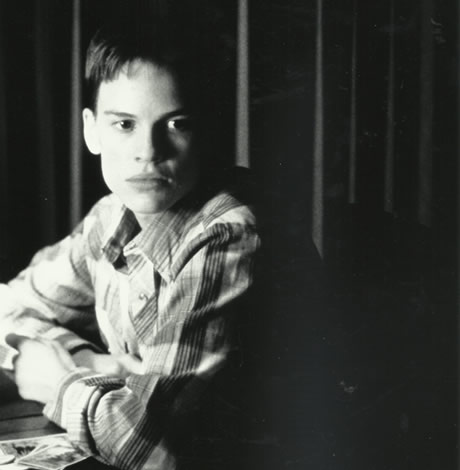
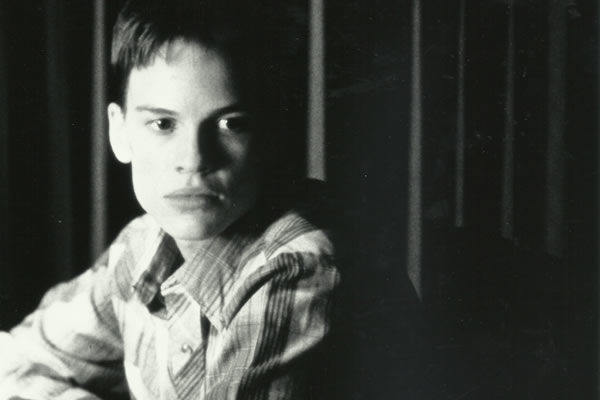
It’s been 20 years ago this month since the release of “Boys Don’t Cry,” the Fox Searchlight movie that depicted the true story of Brandon Teena, a trans man played by Hilary Swank, who adopts a male identity in Nebraska but is murdered in a hate crime.
Directed by Kimberly Peirce, whose interest was piqued by a 1994 Village Voice article about Teena, the film was made for $2 million and made $20 million at the box office. It premiered Oct. 8, 1999 at the New York Film Festival and went into wider release later in the month.
Swank won a bounty of awards for the role including prizes from the New York Film Critics Circle, the Chicago Film Critics, the Boston Society of Film Critics, the Independent Spirit Award, the Golden Globe and the Oscar. It was both widely praised in reviews at the time and holds an 88 percent fresh rating on Rotten Tomatoes.
It’s unlikely, though, that Swank would get cast in the role were it made today. With trans actresses Mj Rodriguez, Indya Moore, Dominique Jackson, Hailie Sahar and Angelica Ross having been cast on the Ryan Murphy FX drama “Pose,” and Scarlett Johansson all but forced to withdraw last year from her planned movie “Rub & Tug” (she was to play a trans character based on Dante Gill, who ran massage parlors in the ‘70s and ‘80s that were brothel fronts) after a backlash ensued, many say it’s a new day for trans actors. Of Johansson, trans actress Trace Lysette (Shea on “Transparent”) wrote on Twitter, “Not only do you play us and steal our narrative and our opportunity but you pat yourselves on the back with trophies and accolades for mimicking what we have lived.”
Cisgender backlash
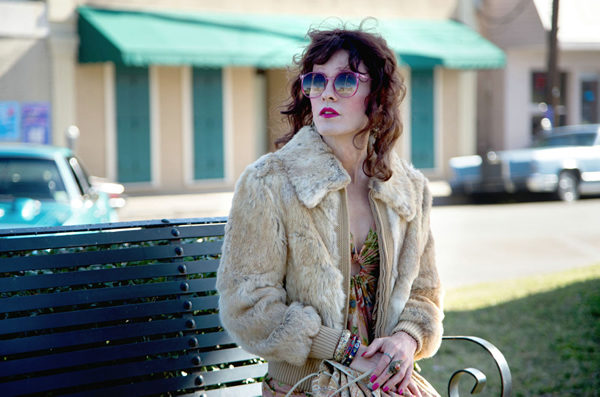
Elle Fanning drew ire the year before for being cast in “3 Generations” as Ray, a female-to-male trans teen. A groundswell had been building with actors like Matt Bomer in “Anything” (2017), Eddie Redmayne in “The Danish Girl” (2015) and Jared Leto in “Dallas Buyers Club” (2013) drawing muted but present backlash.
Conversely, on TV, trans actress Candis Cayne earned the distinction of being the first trans actress to play a recurring trans character on a primetime show when she played Carmelita on ABC’s short-lived “Dirty Sexy Money” (2007-2009). Trans actress Nicole Maines plays the first trans superhero as Dreamer/NiaNal on The CW’s “Supergirl.” In its latest report, GLAAD says there are 26 trans characters currently on TV, vs. 17 in its previous report.
Leto ended up winning a Best Supporting Actor Oscar for his role. Redmayne won the Best Actor Oscar for his and back in 2005, Felicity Huffman was nominated for playing trans in “Transamerica.” A trend was clearly at play — playing trans is Oscar catnip for cisgender actors.
That’s a problem, working trans actors today say.
“The Academy seems to see it as some heroic transformation, but is it any more a feat of acting than what, say, Daniel Day-Lewis did as Lincoln, or any number of great performances you could name,” says Samy Nour Younes, a trans male stage and screen actor in New York. “Beyond the fact that they’re playing another gender identity, the roles are usually not that good. If you watch ‘Boys Don’t Cry,’ ‘Transamerica’ or ‘Dallas Buyers Club,’ which is the worst among them, they’re not particularly well written characters period, not because they assumed a marginalized identity, but we think there’s something inherently taboo or exotic, but in a stigmatized kind of way, about it. Like, ‘Oh, you’re so brave, you deserve an Oscar,’ when it actually wasn’t that great.”
Younes says “Transparent,” the hit 2014-2019 (it just wrapped with a musical finale on Amazon Prime Video Sept. 27) show on which he guested twice in its fourth season, was a game changer just before “Pose” hit big. Although cis actor Jeffrey Tambor played Maura, a retired college professor who comes out as trans, creator Jill Soloway enacted a “transfirmative action program” for the show (cast and crew) where trans applicants were hired in preference to cis applicants. Tambor (“The Larry Sanders Show,” “Arrested Development”) left the show in late 2017 amid sexual misconduct allegations.
“Just letting trans people in the room — directors, writers, consultants — makes a huge difference,” Younes says. “That’s when we start getting layered and nuanced characters that tell stories beyond their transitions, with interesting people. We’re seeing less and less of a need for the Eddie Redmaynes of the world who say, ‘Oh, I did so much research,’ which I call bullshit on that because if you’d really done so much research, you’d have an understanding that we’re not just some costume you can slip on which just helps solidify the Academy’s thinking that that’s all it is and playing trans becomes a farce.”
The casting conundrum
Tammara Billik, a veteran Hollywood casting director known for her work on “Married … with Children” and the famous coming-out episode of “Ellen” in 1997, says things have come a long way since the “Boys Don’t Cry” era.
For one, she says, TV has come into a “golden age” that has “provided a lot more opportunities for all kinds of inclusive roles.”
“Not just with ‘Pose’ and ‘Transparent,’ but now there are a number of trans actors,” Billik, a lesbian, says. “I just read something about their being a trans actor in a series regular role on ‘The Politician’ with Ben Platt. I didn’t know anything about that. It’s happening without a big splash, it’s happening on weekly shows, so I think there is tremendous progress in terms of the trans actor community, particularly on TV.”
Film, she says, is different.
“When ‘Boys Don’t Cry’ came out, gosh, I don’t think I knew a trans actor at the time. … It certainly wouldn’t have been a time when a trans actor would have been cast. Now you would be hard pressed to cast that role with a cis actor,” Billik says. “You just wouldn’t do it, right?”
She says the Johansson episode was “a giant shift.”
“In both a good and bad way,” Billik says. “It’s good for the actors and a good way to show more diversity on television but we’ve also seen a backlash against particularly trans women of color. I’m not saying ‘Pose’ is responsible for it, but people get angry when you show them the truth. We’re all wondering why so many trans women of color are being targeted for violence. Is it because we’re seeing their images more on TV, is it because people have been emboldened by Trump? I don’t know the answer to that.”
It’s an issue GLAAD has been working on for years. Nick Adams and Alex Schmider, GLAAD’s Transgender Media Program team, work with TV networks, production companies, showrunners, script writers, casting directors and agencies as well as PR firms to help bring what it calls “fair and accurate representations for transgender people to the screen.”
They say things are improving dramatically.
“Hollywood is beginning to tell more accurate and well-rounded stories about transgender people and casting trans characters more authentically,” Schmider said in an e-mail comment to the Blade. “Not only are trans characters starting to be written with more nuance, complexity and humanity in the worlds in which they exist, but casting has also begun to evolve in positive ways.”
By their count, there’s only one cis actor still playing a trans role on TV.
The issue is a bit more complex, casting vets say, than “casting more authentically.” Alexa L. Fogel, casting director for “Pose” and a slew of HBO shows such as “Oz,” “The Wire,” and others, says it’s “a really complicated issue” that has multiple angles.
“TV is easier in that you’re creating characters, you’re creating roles, you’re creating stars,” she says. “In the case of ‘Pose,’ none of these people were known before. A lot of them hadn’t really acted before. These roles could be crafted around these people’s strengths to some degree, not so much in the character of Elektra, with her we had to find someone who could deliver what was on the page, and that was challenging for sure, but I think the other side of it is that certainly with films, there are certainly situations in which you need to sell tickets to things. Certain things might not get made without movie stars. These are complicated questions and I don’t know that anyone knows the answers to them all yet, but it’s a conversation.”
The decision to cast trans actors on “Pose” was made prior to Fogel’s involvement with the show. She says that added a layer to the casting process, but she didn’t see it as an extra burden.
“It’s part of the joy of the job,” says Fogel, who declined to state her own sexual orientation or gender identity. “It’s about rising to the challenge. I never considered that it couldn’t be done. It was just about, you know, doing the research, getting ambassadors to the community, making sure I had enough time to meet enough people. Anytime you do something that’s less visible, it’s more time consuming.”
How deep was the talent pool?
“I wouldn’t say it was a huge talent pool, but I’ve done a lot of projects where you just have to really put your head down and do extra research and this was one of them,” she says. “It was challenging but it never felt that it was going to be impossible. It just meant we had to do extra work.”
She’s not aware if the Screen Actors Guild tracks its members’ gender identity (SAG did not respond to requests for clarification on that). Fogel says membership is easy to secure once she casts a lead role.
Could ‘Pose’ be a fluke?
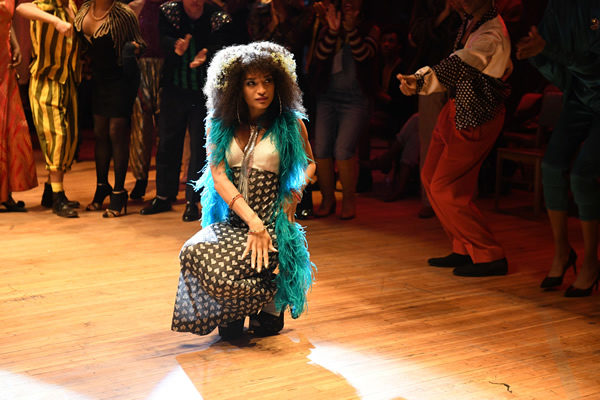
Is “Pose” a one-off or a game changer?
“I don’t have a crystal ball, but I think yeah, the ground is certainly shifting in terms of the conversation,” Fogel says. “I think it’s ultimately about the writing, about the culture and what people feel like they want to see. People want real representation and that seems to be happening across the board.”
Billik agrees.
“‘Pose’ is telling a story that’s really spectacular and a lot of people are really responding to it, so I don’t think it will be a one-off,” she says. “I think we’ll see a whole slew of trans actors cast because of it.”
Aneesh Seth, a trans actress on the Netflix show “Jessica Jones,” says there’s still “a long way to go.”
“Athough trans folks have gained some control over the types of trans narratives out there, they can still tend to be reductive and focused on our trauma,” she said in an e-mail. “Where are the stories of trans folks winning? Falling in love? Having successful marriages and careers?”
Is this the end, at least, of the big stars taking home Oscars and nominations for all the major trans movie roles? And how realistic is it — theoretically — for a trans actor to have given the caliber of performance Swank gave in “Boys Don’t Cry”?
Some say it’s a chicken-or-the-egg argument. If trans actors had been given time to build up their resumes on equal footing with a Swank or a Jared Leto, who knows what they might have achieved? That’s not to say they had easy rides — Swank and her mother, for a time, lived out of a car upon moving to Los Angeles as Swank pursued her dream. But inarguably, upon starting her acting career, she got cast in varied roles far faster and more regularly than any trans actor would have fared, especially in the ‘90s.
Fogel, especially, says it’s hard to account realistically for “what ifs.”
“You can’t really know the answer to that without doing the work,” she says. “I couldn’t have answered any of these questions about ‘Pose’ before I’d done it. The process is so important when it comes to casting. You really have to do the work to find the people, it’s all about the process.”
Looking ahead
The path ahead, many agree, is bright.
“I actually think Time magazine jumped the gun a little bit when they put Laverne Cox on the cover for ‘Orange is the New Black’ and said it was ‘The Transgender Tipping Point,’” Younes says. “Not to take anything away from her, but I think the tipping point is actually now because it’s not just one, it’s multiple roles. There’s a brand new pool of talent and we’re more open to the fact that it could come from anywhere.”
Several folks interviewed for this piece mentioned bit parts they’d seen trans actors cast in of late. Billik just saw “Moulin Rouge” on Broadway and said one of four ladies in the opening number was trans. Younes knows a trans colleague in the ensemble in “Tina: the Tina Turner Musical,” which opens at the Lunt-Fontanne Theatre on Broadway next month (previews are in October). He also cites two trans actors with brief speaking parts in this summer’s “Spider Man: Far From Home.”
GLAAD reps helped cast Zoey Luna, a trans Latina actress, in “The Craft” reboot from Sony as Lourdes, one of the lead girls in the coven who happens to be trans. In 2018, not one of the 110 major studio films released included a trans character, according to GLAAD.
“So this casting and character are game changers in the film landscape,” Schmider says.
Non-binary actor Asia Kate Dillon on Showtimes “Billions,” is another positive step, many agree. And Daniela Vega made history in “Fantastic Woman,” a 2017 Chilean drama that won an Oscar. Vega was the first trans presenter in the history of the Academy Awards when she presented in 2018.
“This isn’t a trend, this isn’t just the topic du jour,” Younes says. “For decades, all we could get were playing the dead hooker on ‘Law & Order: SVU.’ … I hope it’s a continuing trend for trans people making inroads in entertainment.”
SIDEBAR: ‘Boys Don’t Cry’: problematic in retrospect?
Although it was seen as fairly groundbreaking in its day, the 1999 film “Boys Don’t Cry” hasn’t aged particularly well, some argue.
Donna Minkowitz, the writer of the original Village Voice story that inspired the movie, apologized last year in a piece she wrote (also for the Voice) called “How I broke, and botched, the Brandon Teena Story.”
“For years, I have wanted to apologize for what I now understand, with some shame, was the article’s implicit anti-trans framing,” Minkowitz wrote. “Without spelling it out, the article cast Brandon as a lesbian who hated ‘her’ body because of prior experiences of childhood sexual abuse and rape. … At the time, I was extremely ignorant about trans people. Like many other cis queer people at the time, I didn’t know that there were gay trans men, trans lesbians, bisexual trans folks, that being trans had nothing to do with whether you were straight or gay, and that trans activism was not, as some of us feared, an effort to stave off queerness and lead ‘easier,’ more conventional heterosexual lives.”
The trope of the butch lesbian who takes things “just a little too far” and comes out as trans, is a recurring one, trans actor Samy Nour Younes says. He, too, found the film adaptation “problematic.”
“There was a similar storyline on ‘The L Word,’ when Max Sweeney starts taking hormones and becomes this raging monster, a really awful storyline. Seeing some of those things and ‘Boys Don’t Cry’ were the first representations I saw of a trans masculine storyline and stopped me from coming out sooner.”
a&e features
Local, last-minute holiday gift ideas
Celebrate the season while supporting area businesses

The DowntownDC Holiday Market is bustling. Union Station is decked out with its annual Christmas tree. Washingtonians have wrapped their houses and apartment balconies with festive lights and holiday decorations. The holiday season is here. And with stockings to fill and empty space under the tree, Washington’s local shops and artists have plenty to offer.
Show your LGBTQ and D.C. pride with the Washington Blade’s annual holiday gift guide.
To embrace the holiday buzz: The Blanco Nwèl cocktail from Alchy Cocktails. This Caribbean eggnog is one of Alchy Cocktail’s seasonal holiday cocktails. The flavor profile is similar to coquito, a traditional Puerto Rican Christmas drink with a coconut base. As a queer and Caribbean-owned business, Alchy Cocktails has been based out of Washington since 2021. Blanco Nwèl is available in both cocktail ($24) and mocktail ($12) online and at a variety of holiday markets, including the Tingey Plaza Holiday Market, the Flea Market at Eastern Market, Union Station’s Main Hall Holiday Market, and more. ($24)
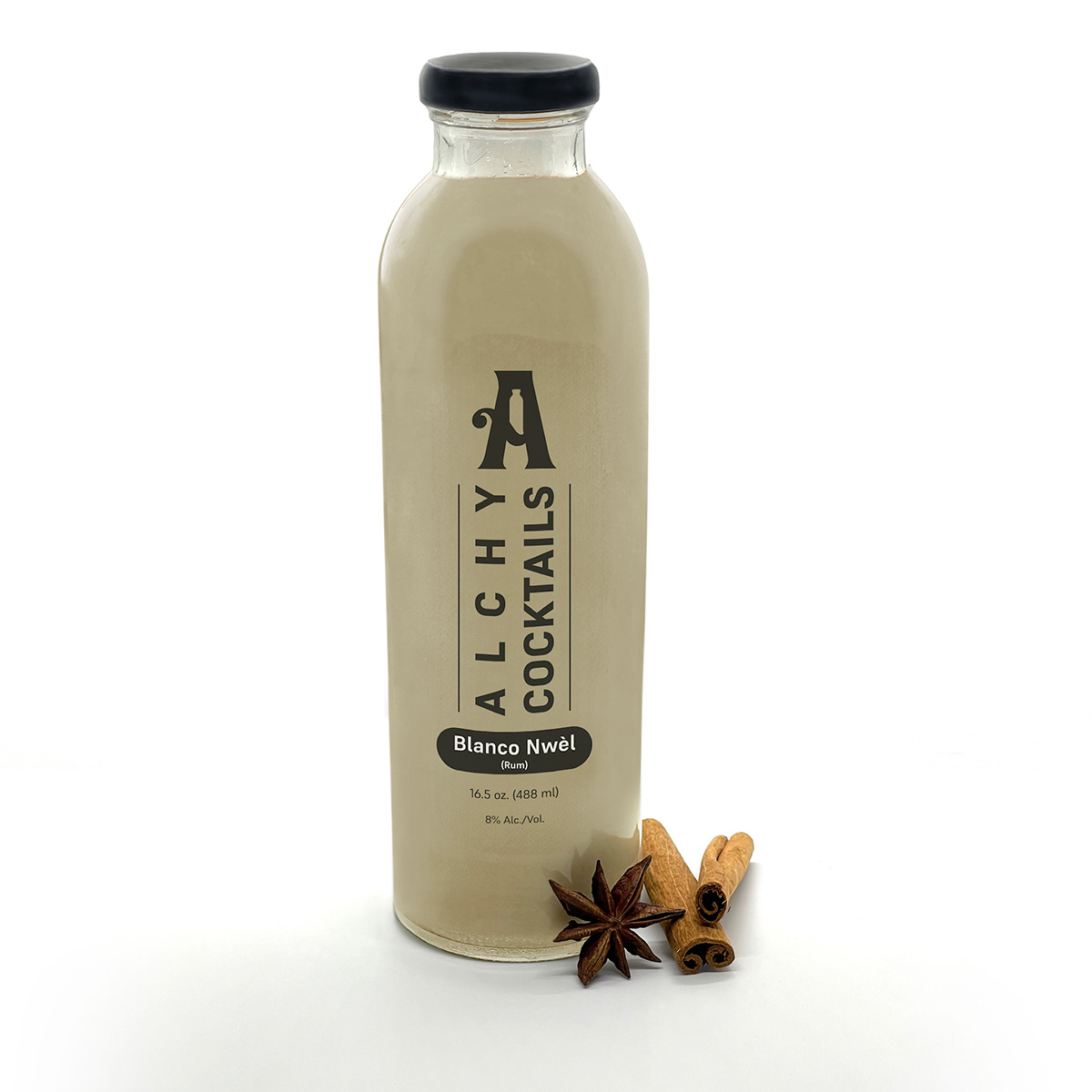
A spicy bite: Gordy’s Cajun Okra from Salt and Sundry. These spicy, tangy pickles pull on Southern Cajun-style flavors, packing a punch with paprika, cayenne, and more. Gordy’s is an LGBTQ-owned and Washington-based brand, making this gift an opportunity to support a local LGBTQ business straight from the jar. This pantry staple is available on Salt & Sundry’s website and at its locations in Union Market, Logan Circle, and its Georgetown holiday pop-up store. ($14)
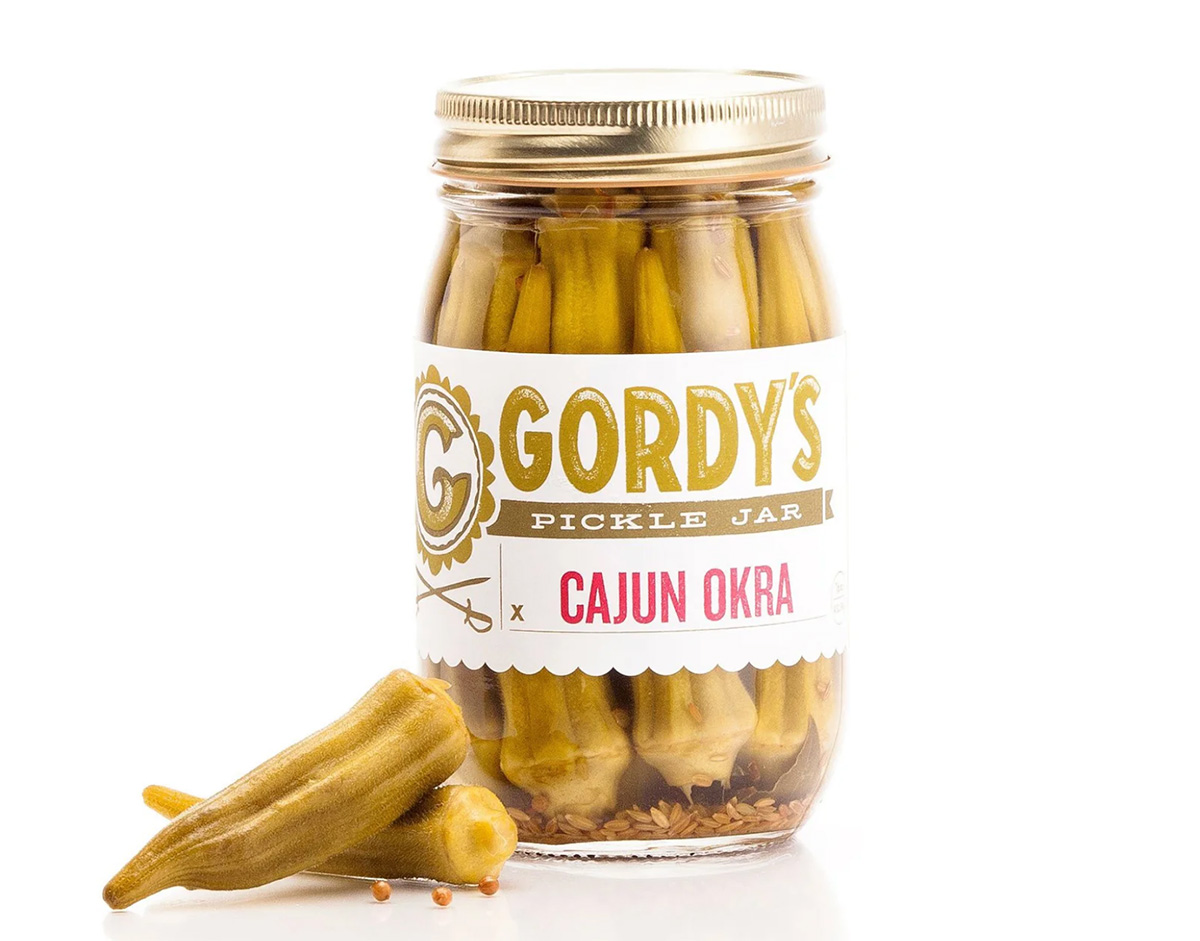

To celebrate Washington pride: The DC Landmark Tote Bag from The Neighborgoods. Native Washingtonians, visitors, friends and family alike will find something to love about this Washington-themed tote bag. Food trucks, the 9:30 Club, the Metro logo and pandas from the National Zoo are just some of the city’s landmarks depicted across the tote in a red, white, and blue color palette. The tote is a part of the DC Landmarks collection, which donates 10 percent of its sales to the American Civil Liberties Union. The Neighborgoods itself is a local, woman-owned business built out of a passion for screen-printing in 2013. The 100 percent cotton canvas tote is for sale online or at the DowntownDC Holiday Market. ($22)
To give friends and family their flowers: The Flowers Bandana from All Very Goods. This 100 percent cotton bandana was designed in Washington and hand printed in India. Its uniqueness comes in being covered with the faces of Black women, representing a “love letter to all women but especially Black women,” according to All Very Goods. The Black woman-owned and operated business, based out of Northwest Washington, has a mission to celebrate diversity and representation through its products. The bandana intends to give Black women their “flowers.” The Flowers bandana is available for purchase online. ($24)

To unlock culinary creativity: The Curious Chef Gift Collection from Each Peach Market. This customizable collection of kitchen oddities — ranging from tinned fish to chili oil — is a quirky gift for the most inventive chefs. The collection is available in a Standard Santa, Extra Goodies and Super Holiday Size for up to $165. The Washington-based market, founded in 2013, permits customers to make the collection special by specifying what unique ingredients are packaged, including products made by local or LGBTQ brands. Each Peach Market offers assembly and pick up in-person at its Mount Pleasant shop and also offers local delivery and nationwide shipping via its website. ($85)

To give a touch of sweetness: The DC Landmark Chocolate Covered Oreo Holiday Cookies from Capital Candy Jar. Wrapped in a festive red bow, this box of nine cookies embraces love for Washington and the holiday season in one. Among the dark and milk chocolate covered cookies are images of the U.S. Capitol, the White House, the Lincoln Memorial, the Jefferson Memorial and festive hollies. The treat, packaged in a Hill East facility just a few blocks from the Capitol, is available for purchase online and at the DowntownDC Holiday Market. ($23.95)


To celebrate queer gaming: Thirsty Sword Lesbians from Labyrinth Games & Puzzles. This roleplaying game embraces lesbian culture by unlocking a world of swords, romance, and battle. Ideal for group settings, the book presents a system of world building and character identities that are best brought to life by creative minds. Labyrinth, which has been a local Washington business for more than 15 years, celebrates non-digital fun through games and puzzles that connect the community. This gift is offered online and at Labyrinth’s Capitol Hill location. ($29.99)
To make a bold statement: The “Resist” T-shirt from Propper Topper. This locally screen-printed black tee features the Washington flag designed within a raised fist, symbolizing both Washington pride, and political resistance. The shirt is made exclusively by Propper Topper, a local Washington business that evolved from a hat shop to a gift store since opening in 1990. The tri-blend unisex shirt is available both for pickup at Propper Topper’s Cathedral Heights location and shipping via the online site. ($32)
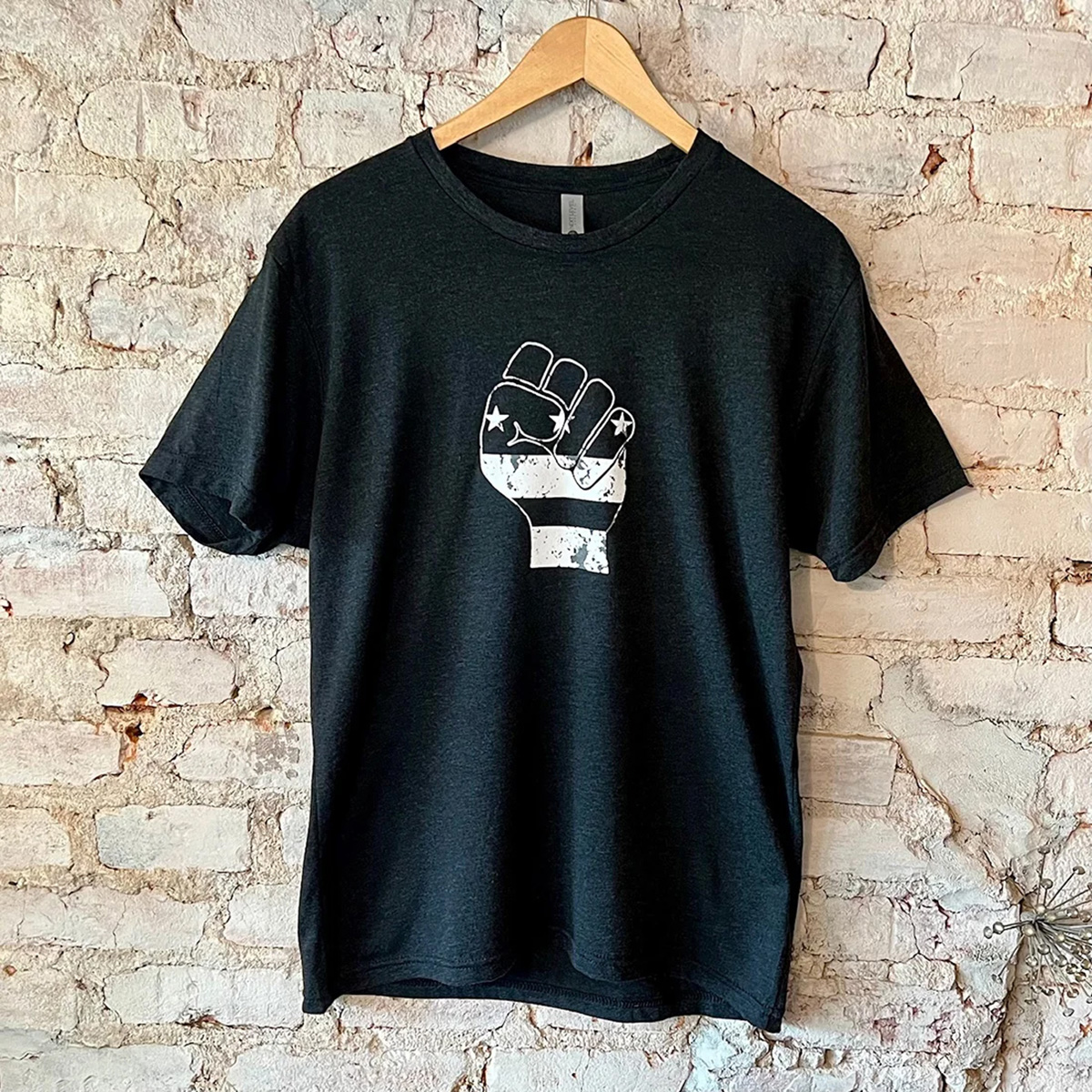
To keep it c(g)lassy: The Glass Ball earrings from Blue Moon Aquarius. Gifting can rarely go wrong when it comes to a new pair of earrings. The unique statement earrings — made of polymer clay, glass, and 18k gold plating over surgical steel — are hand cut, sanded and assembled in Washington, meaning each set is unique. Blue Moon Aquarius, a local brand, is known for its small batch jewelry and home decor designed with clay materials. Available in oxblood, hunter green, lavender, and bluestone color palettes, these earrings are available for purchase on Blue Moon Aquarius’ website and at the DowntownDC Holiday Market. ($48)
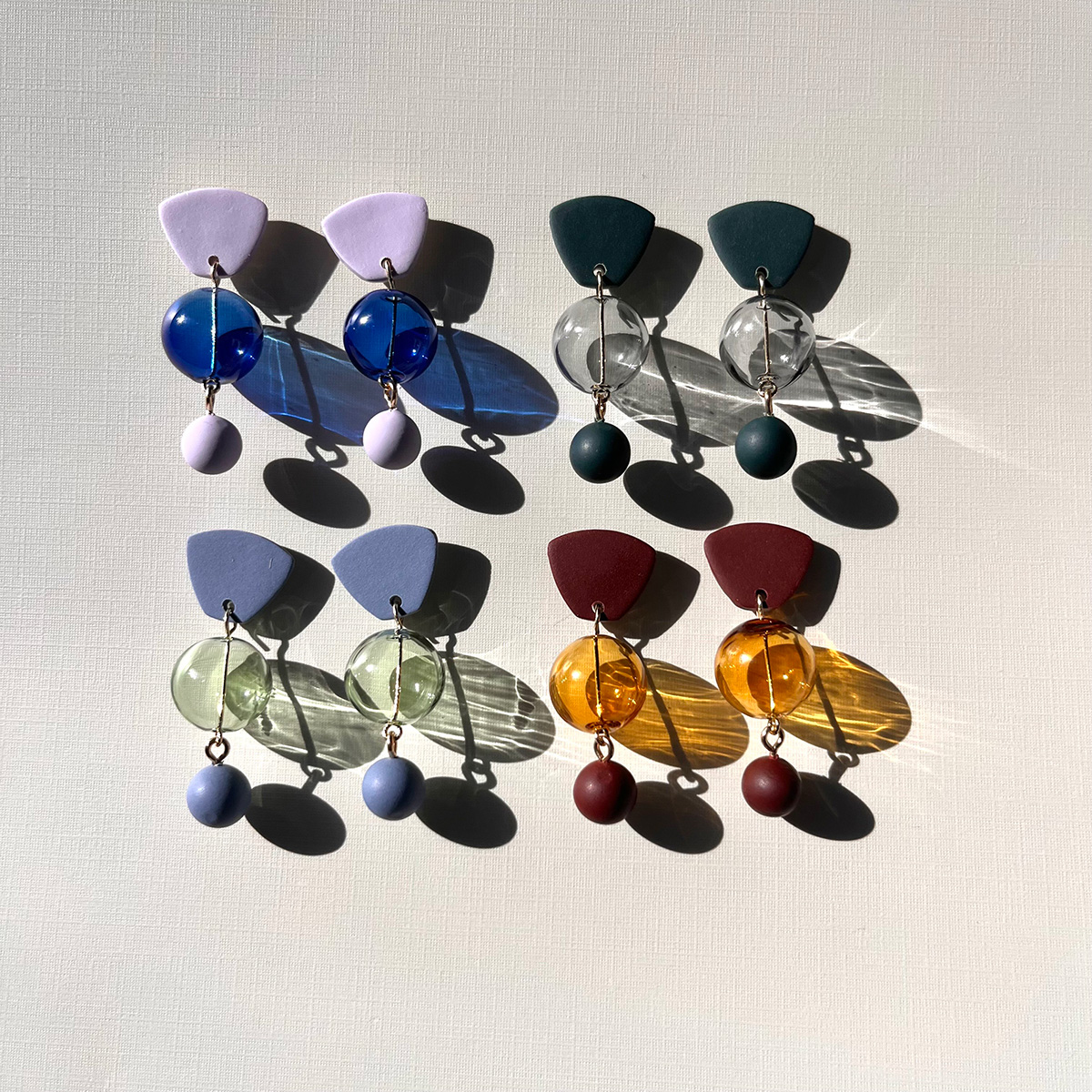
To elevate a holiday tea or charcuterie party: The Honey Flight: Tea Lover’s Selection from BannerBee. This local honey company presents the ideal gift to make cozying up with a cup of tea slightly more special. The Honey Flight contains three types of raw wildflower honey infused with fair trade Ugandan vanilla bean, chai spices, and locally sourced lemon thyme herb. The gift is also an opportunity to uplift a family company based in the Mid-Atlantic that offers all-natural, sustainable products. The flight is available online, at the DowntownDC Holiday Market or at the Arlington Courthouse and Dupont Farmers’ Markets. ($36)

For Baltimore shoppers: If you’re in Charm City, don’t miss Balston Mercantile, opened by a gay couple in June. Their gorgeous shop in the Hampden neighborhood offers an array of unique, upscale finds, from barware and artwork to cookbooks and home decor and more. (849 W. 36th St.)
a&e features
Have yourself a merry John Waters Christmas
Annual holiday show returns to Alexandria and Baltimore
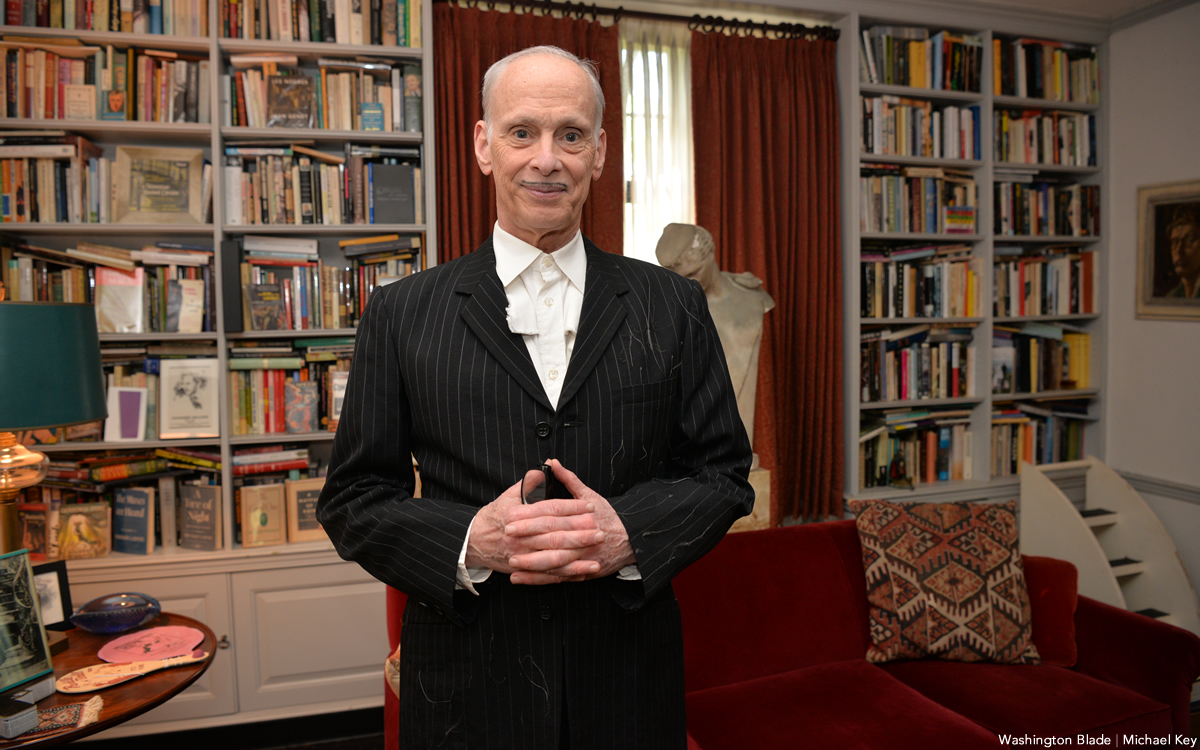
When it comes to iconic Christmas scenes in movies, none can top the tree-toppling tantrum thrown by cha-cha heels-deprived Dawn Davenport in John Waters’s fifth full-length feature “Female Trouble” from 1974. Therefore, it’s not surprising that Waters continues to make art out of Christmas, performing his spoken word Christmas tour in cities across the country. Waters has even more reason to celebrate with the release of his new red vinyl 7” single, a cover of Little Cindy’s “Happy Birthday Jesus (A Child’s Prayer)” on the A-side, and “A Pig Latin Visit From St. Nicholas” on the B-side. If you’re still looking for unique Christmas gifts, consider this record. As always, John was kind enough to make time for an interview in advance of his tour dates.
BLADE: John, in preparation for this interview with you, I went back and listened to Little Cindy’s original rendition of “Happy Birthday Jesus (A Child’s Prayer)” on your “A John Waters Christmas” CD.
JOHN WATERS: One thing I did, if you notice, I make the same stumble in my recording that she did in the original.
BLADE: It sounded to me like she got choked up.
WATERS: No, I think she just stumbles over a word, so I stumbled over the same word. It’s appropriation, insanely.
BLADE: Is this a song you first became aware of in your youth or when you were an adult?
WATERS: When I was doing the Christmas album, I had this friend named Larry Benicewicz. He was kind of my idea man with music. He knew every single old record. I would say to him, “Weird Christmas songs,” when we were doing a soundtrack, or a song about bears, or a song about this, and he would give me all these tapes. It was one of the ones he played for me. A lot of the songs I put in my movies and on my records, I did know as a kid. I did not know this one, but I immediately embraced it. I don’t think it’s campy. I think it really is spiritual in a weird way. My doing it makes it a novelty record. I am really for novelty records, and there aren’t any anymore. Why was there not a COVID novelty record? That’s insane. The dance “The Bug” that’s on the “Hairspray” soundtrack would be perfect for COVID.
BLADE: The thing that struck me was that for a Christmas song in the voice of a child, a kind of death pall hangs over it, with lines like, “If I was good you’d let me live with you” and “they nailed you to the cross, they wanted you to die.”
WATERS: All of it! When I see children at midnight mass kneeling in front of a nude man nailed to a cross, I feel like I’m at The Eagle! It is S&M, it’s creepy. I took the same cover (photo) from her record to parody and put my face on it. The same thing I did with The Singing Dogs last year when I covered (their version of) “Jingle Bells.” I’m really into novelty records. I love them and I’m trying to bring them back. I don’t expect anybody to ever play these records. Even The Singing Dogs one said on it, “Please do not play this record” [laughs]. And the flipside, the Pig Latin version, is almost impossible to listen to.
BLADE: I’m so glad you mentioned that. “A Pig Latin Visit From St. Nicholas” reminded me of the lost art of speaking in Pig Latin. I also recall watching the PBS series “Zoom” as an adolescent and learning to speak “ubbi dubbi,” a distant relative of Pig Latin. Do you think that the time is right for a Pig Latin or ubbi dubbi revival?
WATERS: Here’s the thing, I never could pick up any language, except Pig Latin. I’ve been in every foreign country. Foreign countries have given me money to learn to speak the language. I can never do it! But Pig Latin…my parents and other parents in the ‘50s spoke Pig Latin so kids couldn’t understand what they were saying. Then my mother taught it to me, and I used it. The hardest take to shoot in “Pink Flamingos” was not eating the dog shit. It was when the cast skipped, in one take, saying “E-way, are-yay e-they ilthiest-fay eople-pay in-hay e-they ole-hay ide-way orld-way.” We’re the filthiest people in the whole wide world in Pig Latin. We had to do so many takes so they could do it once without screwing it up. In “Polyester,” Edith (Massey) answers the phone, “ello-hay.” I did a photo piece where it was all subtitled in Pig Latin. Like “osebud-Ray” (from “Citizen Kane”) or in “Streetcar,” “ella-Stay!” [Laughs] All the iconic dialogue translated into Pig Latin. My assistant who helped me do it, had never heard of Pig Latin. She really got good at it because she lived in many foreign countries and can pick up languages. But it’s not that easy to do it correctly and read it. Your computer will translate into Pig Latin.
BLADE: AI understands Pig Latin?
WATERS: I guess that’s AI. It wasn’t 100% right, but it was close. I can speak it if I look at it, but just do a bit at a time. It was a challenge that no one would possibly care about or want to do.
BLADE: I think you pulled it off very well.
WATERS: If you want people to leave on Christmas morning, you put it on. That’s how you get your guests to leave. It’s time to go.
BLADE: Ood-gay i-bay! How did your relationship with record label Sub Pop, which released 2021, 2022, 2024, and new 2025 holiday singles, come about?
WATERS: I believe the first thing I did for them was “Prayer to Pasolini.” They came to me through Ian Brennan. He’s won a couple Grammys for World Music, but he is also is one of my agents who does the Christmas tour and a lot of my shows, anything with music. He helped me arrange each one of the songs. He had a relationship with Sub Pop. It was perfect. My friends in Baltimore, (the band) Beach House, have had huge success.
BLADE: That’s right, they’re on Sub Pop!
WATERS: Yes! I’m happy to be on it. I’ve even been to the warehouse and posed for pictures like Jackie Suzanne used to do.
BLADE: Is there any chance that “A John Waters Christmas” might be reissued on vinyl by Sub Pop?
WATERS: No. It’s such a nightmare to get the rights and to renew them. You have to find the publisher and the writer, and they usually hate each other. It doesn’t matter if it’s obscure or famous, it’s hard to get. You have to make the deal. The singer doesn’t get anything unless they play it on the radio. It would be so complicated legally, and there would be such a [laughs] tiny audience for it. I hope it will come out again. The same thing with the one for Valentine’s Day. I had two of them that did quite well when they came out; “A Date With John Waters and “A John Waters Christmas.” The “John Waters Christmas” album is still the soundtrack that plays whenever I’m doing my spoken word Christmas show as people are entering the theater.
BLADE: Aside from your annual Christmas show tour, what else do you do for the holidays now, and are there any traditions that you’ve carried over from your family?
WATERS: Certainly! I have two sisters, my brother’s widow, and me, so there are four and we take turns each year to have the Christmas dinner. Mine was last year. An entire sit-down dinner. Mom’s China, the silverware, the entire full dinner. It’s pretty traditional. I don’t have a Christmas tree, but I do decorate the electric chair from “Female Trouble.” That is a tradition in my family. We do have Christmas decorations, but they’re usually weird ones that fans sent me. I have one with Divine knocking over the Christmas tree, and the Christmas tree lights up, all sorts of amazing things. There is definitely a tradition here that might be a little altered, but it is definitely a tradition. I used to have a giant party every year, but COVID ended that. I still wouldn’t want 200 people in my house breathing right now.
BLADE: I was looking at your tour schedule and wondered if there are any new cities in which you’ve never performed the John Waters Christmas show that have been added to this year’s schedule?
WATERS: I don’t think there’s a city in America in which I haven’t done one show! The only places I haven’t been to are Hawaii and Alaska. I could do it there, but it’s too long on a tour. I can’t think of a city I haven’t played in in America over the last 50 years. The Christmas show is completely different every year. It doesn’t matter if you saw it last year.

Some gifts scream practical, others whisper luxury, and a few flat-out blur the lines. From cocoa that feels ceremonial to a cologne that linger like a suggestive smirk, this year’s ultimate gift picks prove that thoughtful (and occasionally naughty) presents don’t have to be prosaic. Welcome to your holiday cheat sheet for festive tangibles that get noticed, remembered, and maybe even result in a peck of gratitude planted under the mistletoe. Consensually, of course.
Amber Glass Champagne Flutes
Pop the champs – but make it vintage. These tulip-shaped stunners in amber-tinted glass bring all the Gatsby vibes without the Jazz-age drama. Whether you’re toasting a milestone or celebrating a Tuesday, their seven-ounce capacities and hand-wash-only care make ‘em as practical as they are pretty. Pair with a thoughtful bottle of bubs and gift with a glittering wink. $18, NantucketLooms.com
Disaster Playbook by Here Comes the Apocalypse
Because the end of the world shouldn’t be a solo act, this spiral-bound guide is your step-by-step roadmap to surviving and thriving when everything else goes sideways, which might be sooner than you think. Packed with checklists, drills, and a healthy dose of humor, it’s like a survival manual written by your most prepared (and slightly snarky) friend. Whether you’re prepping for a zombie apocalypse or, more realistically, REVOLUTION!, this playbook’s got your back. $40, HereComesTheApocalypse.com
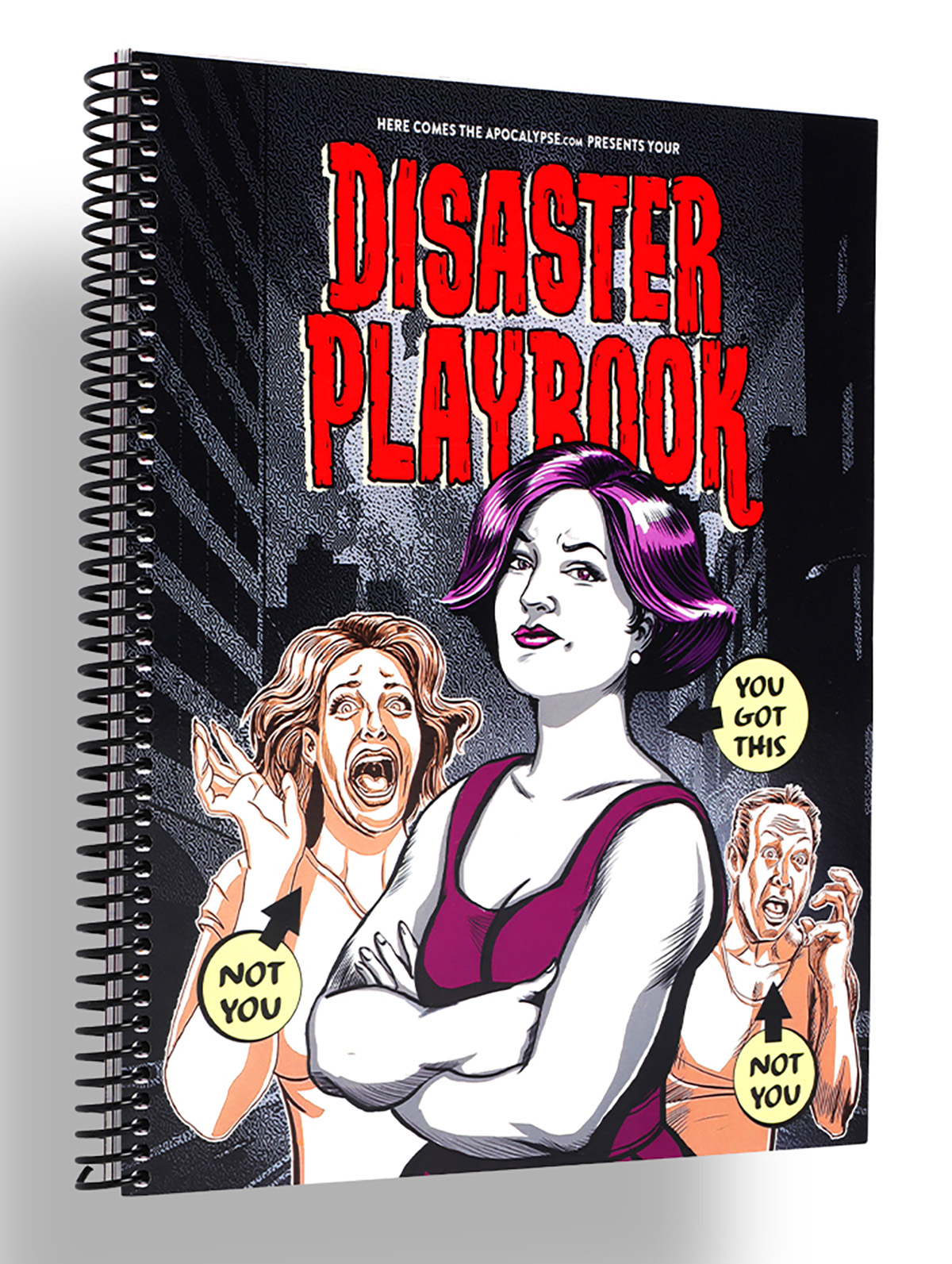
Wickless Vulva Candles
Bold, luxurious, and completely flame-free, CTOAN’s wickless candles melt from beneath on a warmer, releasing subtle, sophisticated fragrances, like sandalwood or lavender. The vulva-shaped wax adds a playful, provocative element to any space –perfect for a bedroom, living room, or anywhere you want elegance with an edge. A gift that celebrates form, intimacy and self-expression, no fire required. $39, CTOANCO.com
Villeroy & Boch Royal Classic Christmas Collection
Every meal is a mini celebration – with whimsy at every place setting – in Villeroy & Boch’s Royal Classic festive dinnerware collection that hits all the right notes. Made from premium German porcelain, it features nostalgic little toys, nutcrackers, and rocking horses in delicate relief, giving your holiday spread a playful but refined twist. Dishwasher- and microwave-safe, it’s luxe without the fuss. Gift a piece to a special someone, or start a collection they’ll use (and show off) for years to come. $22-$363, Villeroy-Boch.com
Greenworks Electric Lawnmower
You a ’hood queen who considers lawn care performance art – or just wants to rule the cul-de-sac in quiet, emission-free glory? Greenworks’ zero-turn electric mower has the muscle of a 24-horsepower gas engine but none of the fumes, drama or maintenance. Six 60V batteries and a 42-inch deck mean you can mow up to two-and-a-half acres on a single charge – then plug in, recharge, and ride again. It’s whisper-quiet, slope-ready, and smooth enough to make you wonder why you ever pushed anything besides your queer agenda. The perfect gift for the homeowner who loves sustainability, symmetry, and showing off their freshly striped yard like that fresh fade you get on Fridays. $5,000, GreenworksTools.com
Molekule Air Purifier
For the friend who treats their space like a sanctuary (or just can’t stand sneezes), the Molekule Air Pro is magic in motion. Covering up to 1,000 square feet, it doesn’t just capture allergens, VOCs, and smoke – it destroys them, leaving your air feeling luxury-clean. FDA-cleared as a Class II medical device, it’s serious science disguised as modern design. Gift it to your city-dwelling, pet-loving, candle-burning friend who likes their living room as pristine as their Instagram feed. $1,015, Molekule.com

Cipriani Prosecco Gift Set
Effervescent with stone-fruit sweetness and a touch of Italian flair, the Cipriani Bellini & Prosecco gift set brings brunch-level glamour to any day of the week. The Bellini blends rich white-peach purée with sparkling wine, while the dry ’secco keeps things crisp and celebratory. Pop a bottle, pour a flute, and suddenly winter weeknights feel like a party – even with your pants off. $36, TotalWine.com
Woo(e)d Cologne
British GQ recently crowned Woo(e)d by ALTAIA the “Best Date Night Fragrance,” and honestly, they nailed it. Confident without being cocky – smoky gaïac and Atlas cedarwood grounds the room while supple leather and spicy cardamom do all the flirting – it’s a scent that lingers like good conversation and soft candlelight. Gift it to the one who always turns heads – or keep it for yourself and let them come to (and then on) you. $255, BeautyHabit.com

Lococo Cocoa Kit
Keep the run-of-the-mill mugs in the cabinet this Christmas and pull out Lococo’s handcrafted Oaxacan versions that demand you slow down and sip like it matters. Paired with a wooden scoop, rechargeable frother, and Lococo’s signature spice hot-chocolate blend (vegan, gluten-free, with adaptogenic mushrooms), this holiday kit turns Mexi-cocoa into a mini ritual you’ll look forward to. Perfect for anyone who loves a little indulgence with a side of ¡A huevo! energy.
Manta Sleep Mask
Total blackout, zero pressure on the eyes, and Bluetooth speakers built right into the straps, this ain’t your mama’s sleep mask — but it could be. The Manta SOUND sleep mask features C-shaped eye cups that block every hint of light while ultra-thin speakers deliver your favorite white noise, meditation, or late-night playlist straight to your ears. With 24-hour battery life, breathable fabric, and easy-to-adjust sound, it turns any bed (or airplane seat) into a five-star sleep suite. Perfect for anyone who treats shut-eye like an art form (or just wants to escape their roommate’s late-night bingin’ and/or bangin’). $159, MantaSleep.com

Shacklelock Necklace
Turn the industrial-chic vibe of a shackle into a sleek statement. Mi Tesoro’s platinum-plated stainless-steel necklace sits on an 18-inch wheat chain, featuring a shackle-style latch pendant that’s waterproof, tarnish-free, and totally fuss-les. Beyond style, it nods to a classic gesture in the queer leather community: replacing a traditional Master lock with something elegant to quietly signal belonging to someone special. Wear it solo for a minimalist edge or layer it like you mean it; either way this piece locks in both your look and your intentions. $90, MiTesoroJewelry.com
Parkside Flask Mojave Edition
Wine nights get a desert glow-up with Parkside’s limited-edition 750-milliliter all-in-one flask draped in sun-washed bronze and badland hues like sage, sand, and terracotta – with magnetic stemless tumblers that snap on for effortless shareability. It keeps your vino chilled for 24 hours, pours without drips (no tears for spilled rosé, please), and even lets you laser-engrave your own mantra or inside joke. Perfect for picnics, surprise rooftop clinks, or gifting to your favorite wine (or desert) rat. $149, HighCampFlasks.com

Mikey Rox is an award-winning journalist and LGBT lifestyle expert whose work has published in more than 100 outlets across the world. Connect with him on Instagram @mikeyroxtravels.



















